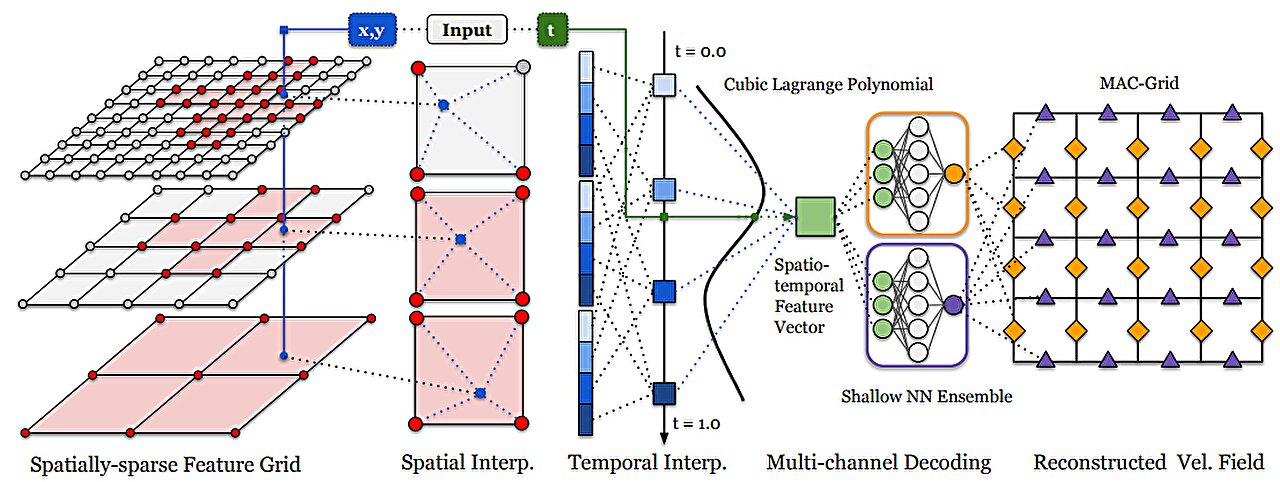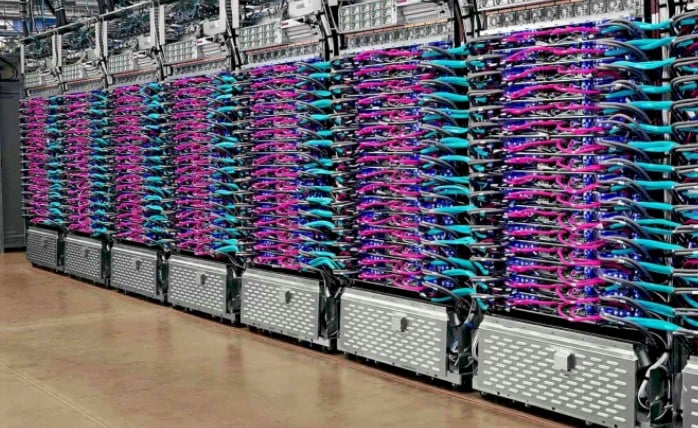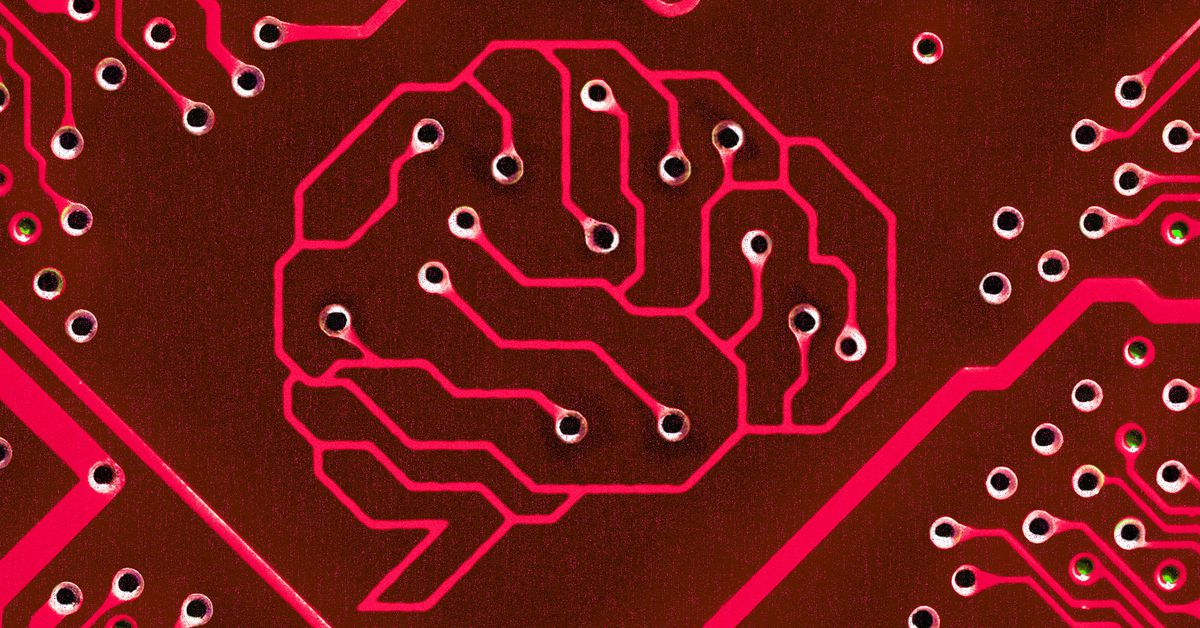Illustration of our Spatially Sparse Neural Fields (SSNF) in 2D
In our NFM simulation framework, we utilize Spatially Sparse Neural Fields (SSNF) to depict a continuous spatiotemporal velocity field. To obtain the velocity corresponding to coordinates (𝑥, 𝑦, 𝑡), we initially interpolate the multi-resolution, spatially sparse feature grid with (𝑥, 𝑦) to acquire a feature vector for each resolution (depicted in the left two columns). These vectors are then organized into 4 temporal anchor vectors, which are further interpolated with 𝑡 to derive the final feature vector (shown in the middle column). Ultimately, the feature vector is decoded using neural networks to determine the velocity components (illustrated in the right two columns).
Credit: arXiv: DOI: 10.48550/arxiv.2312.14635
Computer graphic simulations have advanced in representing natural occurrences like tornados, underwater scenarios, vortices, and liquid foams more precisely, courtesy of the progress in artificial intelligence (AI) neural networks.
By collaborating with a multi-institutional research team, Bo Zhu, an Assistant Professor at Georgia Tech, merged computer graphic simulations with machine learning models to enhance the simulations of established phenomena. This breakthrough benchmark could pave the way for simulating other phenomena that have not been explored yet.
The paper “Fluid Simulation on Neural Flow Maps,” co-authored by Zhu, received the best paper award at the SIGGRAPH Asia conference in Sydney, Australia, in December, presented by the Association for Computing Machinery’s Special Interest Group in Computer Graphics and Interactive Technology (SIGGRAPH).
Published in ACM Transactions on Graphics, the paper is available on the preprint server arXiv.
The researchers suggest that this advancement could be as groundbreaking for computer graphic simulations as the introduction of neural radiance fields (NeRFs) was for computer vision in 2020. NeRFs, introduced by researchers from the University of California-Berkley, University of California-San Diego, and Google, are neural networks capable of converting 2D images into navigable 3D scenes effortlessly.
NeRFs have become a standard benchmark in computer vision research. Zhu and his team aim for their creation, neural flow maps, to have a similar impact on simulation research in computer graphics.
Zhu raised a crucial question about the potential of AI to revolutionize traditional methods and propel simulation accuracy to new heights, akin to its impact on natural language processing and computer vision. While traditional simulation pipelines in computer graphics are typically built on mathematical equations and numerical schemes, Zhu emphasized the need to integrate AI capabilities into these structures to achieve superior results.
The introduction of neural flow maps as a new framework by Zhu and his collaborators aims to address the limitations of existing simulation pipelines by leveraging machine learning models to store spatiotemporal data more effectively. By aligning these models with the mathematical framework, the researchers have achieved higher accuracy compared to previous pipeline simulations.
Zhu advocates for a collaborative approach between machine learning and traditional numerical equations, emphasizing that the goal is not to replace the latter but to enhance them and unlock new possibilities.
The authors of the paper believe that the innovative algorithmic designs enabled by neural flow maps could open up new avenues for research in computer graphics.
Neural flow maps provide a fresh perspective on integrating machine learning into numerical simulation research, offering promising implications for computer graphics and computational sciences.
Zhu concluded by highlighting the inspirational success of Neural Flow Maps in combining physics and machine learning effectively.
More information:
Yitong Deng et al, Fluid Simulation on Neural Flow Maps, ACM Transactions on Graphics (2023). DOI: 10.1145⁄3618392. On arXiv: DOI: 10.48550/arxiv.2312.14635
Provided by Georgia Institute of Technology
Citation:
Researchers reach new AI benchmark for computer graphics (2024, March 6)
retrieved 6 March 2024
from https://techxplore.com/news/2024-03-ai-benchmark-graphics.html
This document is subject to copyright. Apart from any fair dealing for the purpose of private study or research, no part may be reproduced without the written permission. The content is provided for information purposes only.










